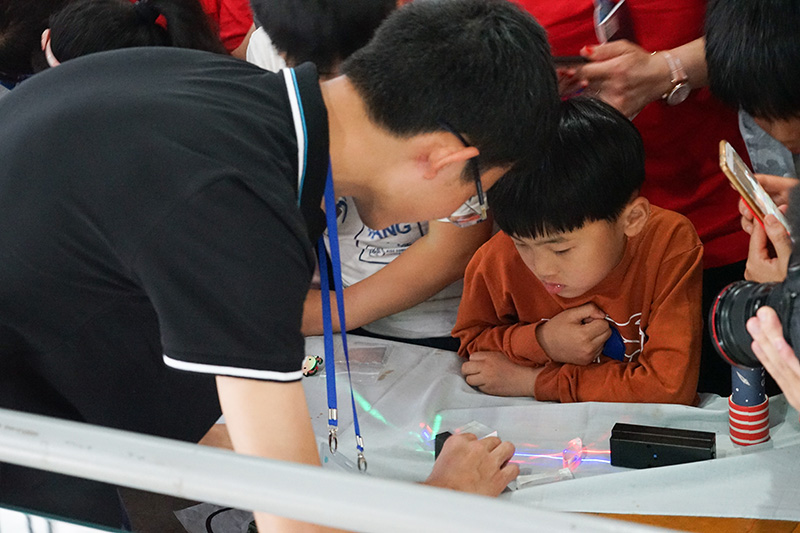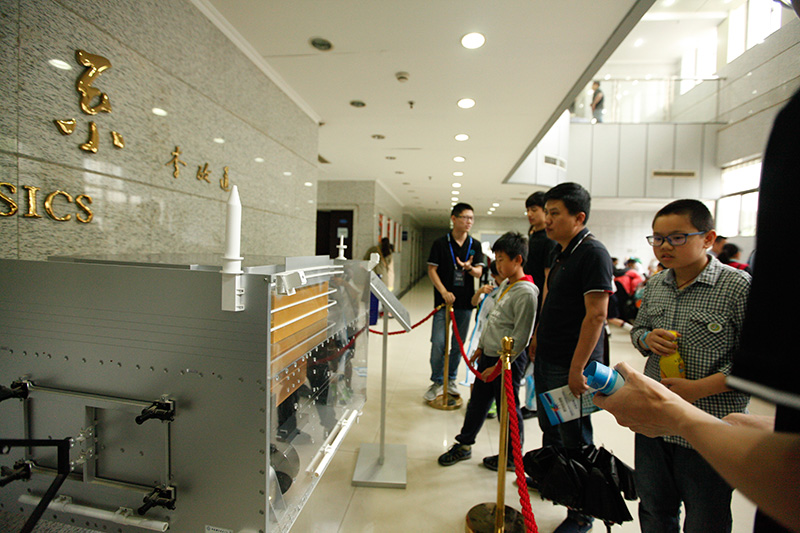Artificial intelligence (AI), one of the hottest topic discussed today, attracted unprecedented attention from many fields. During the Science and Technology Week, Hefei National Laboratory for Physical Sciences at the Microscale (HFNL) introduced the public to AI, and with the State Key Laboratory of Particle Detection and Electronics (SKLPDE) shows models of famous satellites in space. In the exhibition hall, visitors' real-time images were processed through convolutional neural network, which was an algorithm simulating the biological neural network, converted into paintings with the artistic style of Vincent Van Gogh and displayed on a screen. Such an amazing application of AI attracted a crowd of children who curiously staring at the screen and listening to the on-site explanation.
On another stall, Materials Genome, a project which collected enormous data from the structures to the properties of over 3 million materials using machine learning algorithm, drawn attention of visitors from several tech companies. They said such a project would be of great help in designing novel materials with application potential.

A boy watching colorful optical experiments attentively. Photo by LIANG Jing, MA Xiaohan.
In addition to the marvelous application of AI, another popular exhibit in the hall of HFNL was the model of Micius, a quantum communication satellite designed by the team of Prof. PAN Jianwei and named after the ancient Chinese scientist and philosopher. "I have participated the Science and Technology Week with my child for several years and he is really enjoying it. I think it is of great importance to show our children that our country is becoming a true technological power,” said a visitor.
Meanwhile, a lecture about another satellite developed by a USTC research team, the Dark Matter Particle Explorer (also known as Wukong), was held in the SKLPDE. Laboratories of other research teams locates in the same building were also open to the public, including the Lab of Micro-Pattern Gas Detectors, the Lab of Positron Technique and so on.

Visitors learning details about the satellite. Photo by LIANG Jing, MA Xiaohan.
"Personally, I think one of the most important goals of Science and Technology Week is to provide an opportunity for the public to know more about mysterious scientific researches and promote their interest in science. In this respect, I believe the Science and Technology Week this year is doing a great job,” said a volunteer.
(Written by WU Qiran, edited by HU Dongyin, USTC News Center)